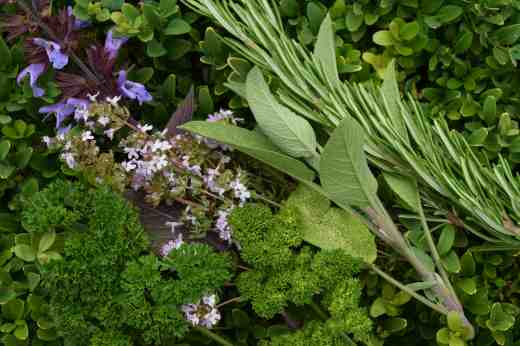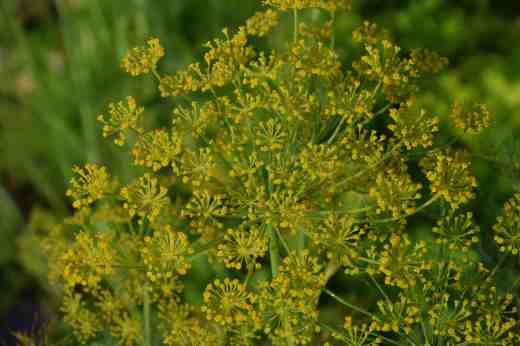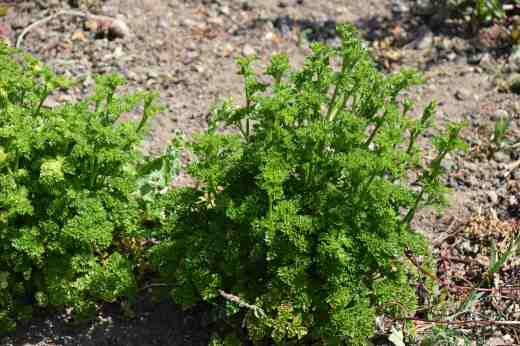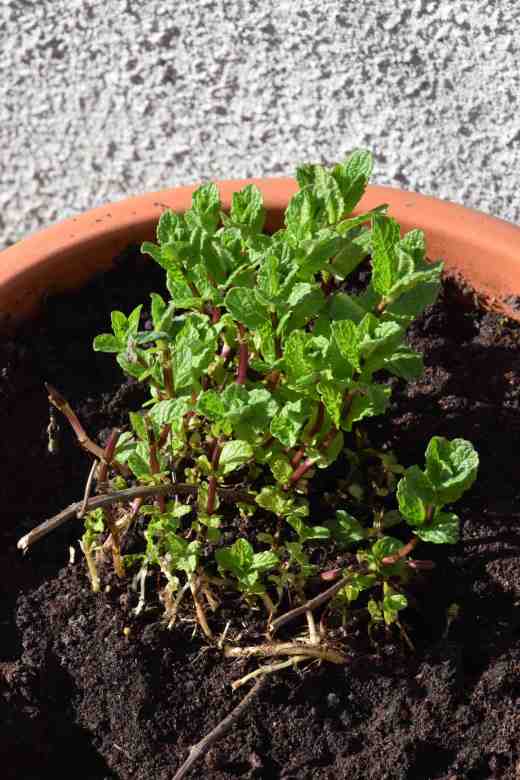K.I.S.S. Keep it simple Sunday: Herbs
To address some of my more esoteric and opinionated posts I am going to start a series of posts that address some basic subjects. The germ of the idea started with a WhatsApp conversation I had with my niece about herbs. She was confused and annoyed that some were not going to be alive next year, having spent time looking after them all this summer. Text messages were not ideal to explain the complexity of the subject. So, here is a more comprehensive explanation for you Charlotte.

Herbs, which are simply plants with aromatic leaves that we use for flavouring and fragrance, are not all related to each other. Some plant families, such as the parsley family and the sage family, are well represented but they do not all need the same conditions. And they do not have the same life cycle. Some are annuals, some are biennials, some are herbaceous perennials and some are shrubs.
Annuals

An annual is a plant that will grow from seed, mature and flower, set seed and then die within a year.
Annual herbs include dill, chervil, coriander and basil.
Buying these as plants is poor value because each plant will not last more than a few months. In addition, dill, chervil and coriander rush to flower within a couple of months after starting to grow so if you want lots of leaves you must sow some seeds every month from March to July. The seeds are large, easy to handle and they germinate easily.
Basil is a bit different because, apart from needing more warmth and sun than the others, a plant could last all summer and some basils are potentially perennial, though not easy to overwinter.
Biennials

A biennial is a plant that starts to grow one summer and then flowers, sets seed and dies the second year. Flowering and setting seed is usually prompted by a cold winter rest, followed by warmth. Parsley is the most popular Biennial herb. You can sow it in spring, you can sow it in summer or you can sow it in early autumn. But no matter when you sow it or how large the plants are, the following April the plants will send up flower stems. So spring sowing will give you a long period of fresh leaves and the biggest plants.
You could buy young plants in spring but parsley is not difficult to grow from seed. You can also buy supermarket pots of herbs and split these seedlings but they need some care because they are very crowded in the pots and will suffer damage when you divide them. Split each potful into four or five clumps and don’t attempt to divide them into single plants!
Other biennials include borage.
Herbaceous perennials
A herbaceous perennial is a plant that dies down to soil level in winter but can live for many years. They usually get bigger and better every year.
This group includes a wide range of herbs including mints, lemon balm, monarda, chives, fennel, tarragon and marjoram. As can be imagined, they all need different conditions.
Lemon balm, monarda, chives, fennel and mint all prefer moist, rich soil and will tolerate some shade. They are all easy to grow and can spread further than you want. Fennel is a giant and will reach 2m high and will seed around. Lemon balm is a nice plant for bees as well as for its scent but it can self seed. There are yellow-splashed and all-yellow kinds and these are much more attractive than the plain green.

Mint is so easy to grow it is actually a problem! It spreads by vigorous surface stems and is often grown in pots to contain it. But, restricted to a pot, it soon declines and needs to be repotted every year. Just chop a section off to keep and replant in fresh compost every spring. Plant in the border at your peril.
Marjoram and tarragon prefer a well-drained soil and full sun. French tarragon is the one you want – Russian tarragon is coarser and not as tasty.
Shrubby Perennials

Although I am calling these shrubby perennials, because they are, we can also call these just shrubby herbs. These include everything from small thymes, sage, lavender, rosemary, myrtle and bay. It is best to buy plants of these and they should last for many years. They all prefer a sunny site and well-drained soil.
Does all this matter?
Well it does because it explains why, despite your best efforts, your coriander died.
It also prevents you from planting a herb pot with parsley, thyme, fennel and mint. In the first month it will look so pretty. By September the fennel will be 1.5m high and the thyme, which is low and slow, will be swamped. By the next March the fennel stems will be dead but will be sprouting at the base. In April the mint will be everywhere, the thyme will be dead and the parsley flowering. By July the pot will be a mass (or mess) of mint and fennel.
I love herbs in the garden for their looks and to use, so thanks for your article. Your last point about planting a herb pot is so true! Herbs are all different, the term ‘herb’ means nothing really.
I’m always surprised (and a bit annoyed) when I see articles suggesting mint should be planted in the border in a bottomless pot to stop it escaping. Ha ha, probably slows it down for about a week! I grow mint in pots on slabs, and I have roots and shoots coming out the holes in the bottom of the pot.
You are correct about needing to repot the mint quite regularly, otherwise it just fades away. I forgot to do mine this spring and I’ve definitely lost some. I’ll remember in future – thanks.
Thank you for your comments – it is easy to see that you really grow herbs. As well as popping out of the base of pots, mint will also ‘flow’ over the top of the pot with masses of creeping stems. I have sometimes let variegated apple mint loose in the border with the idea that the foliage would look nice among flowers bur it is the wandering habit that makes it so difficult. Not only does it move, but it leaves the area it was originally planted. And where it colonises new soil it is so vigorous it swamps other plants. Like hordes of Vandals.
Yes; this is so accurate. To complicate matters several species are marketed as ‘herbs’ merely because of their aromatic foliage. One of the lemon gum (Eucalyptus citriodora) here was left by a neighbor who purchased it in a four inch pot as a culinary herb. I do happen to like lemon gum in an appropriate landscape, but have never found a use for the delightfully aromatic foliage.
Eucalyptus citriodora is not hardy here but I did see seedlings for sale the other day – at 15 euro for 20cm tall seedlings – which are easy to raise from seeds. Yes the smell of the juvenile foliage is nice but I am not suer how it is used.